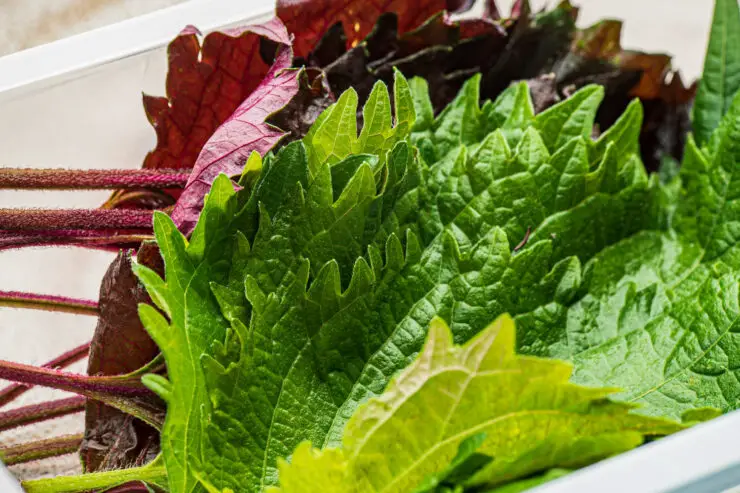As an Amazon Associate I earn from qualifying purchases. Please read the disclaimer for more info.
Perilla leaves are a popular ingredient used in Korean, Japanese, and Vietnamese cuisine. Known for its distinct flavor and aroma, perilla leaves have a strong presence in Asian cuisine. However, if you’re unable to find perilla leaves or dislike the taste, there are several substitutes you can use to achieve a similar flavor profile. This blog post will explore the best Perilla leaves substitute.
Shiso Leaves vs Perilla Leaves
Korean perilla leaves and shiso leaves may sound like two completely different types of foliage, but they have many striking similarities.
Both of these pungent and flavorful leaves come from the mint family and have a long history of use in Asian cuisine. They both have a similar shape and texture, with serrated edges and a deep green or purple color. Perilla leaves are commonly found in Korean cuisine, while shiso leaves are more commonly used in Japanese cooking.
Interestingly, both leaves have a strong and distinctive taste ranging from slightly minty to slightly spicy.
Although their names and origins may differ, these two leaves share many common characteristics that make them unique additions to any dish.
This article will assume that substitutes for perilla equate to a shiso leaves substitute as well.
Other Names for Perilla Leaves
Perilla leaves, known as shiso in Japanese, are a highly versatile herb commonly used in East Asian cuisine.
While they are popular in many dishes, perilla leaves are known by a variety of different names depending on the country and region.
In Korea, they are called deulkkae; in Vietnam, they are called tía tô. Other names for perilla leaves include sesame leaf, perilla mint, beefsteak plant, purple mint, and wild coleus.
Regardless of what they’re called, perilla leaves offer a distinct flavor to any dish they’re added to and have become a staple in many East Asian kitchens.
Best Korean Perilla Substitutes
Thai Basil
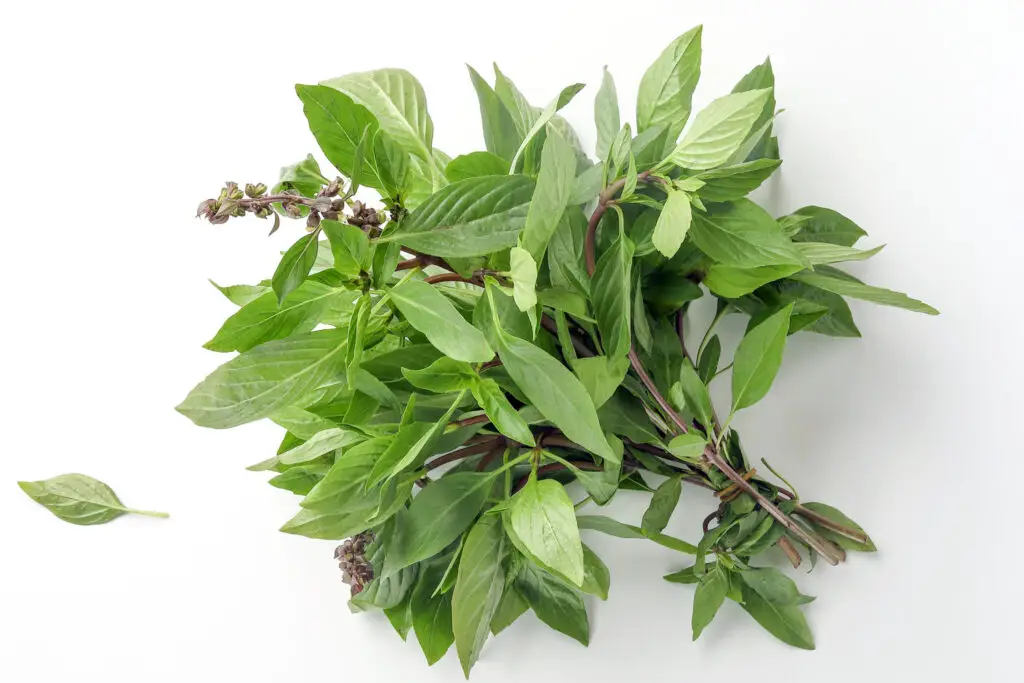
Due to its unique flavor profile, Thai basil is an excellent perilla leaf substitute. While perilla leaves offer a hint of minty spice, Thai basil boasts a stronger licorice-like taste that pairs well with many traditional Asian dishes, like stir-fries and curries.
Additionally, Thai basil’s leaves are heartier and more substantial than perilla, making them perfect for use as a wrap or garnish.
Not to mention, Thai basil is more widely available in grocery stores and markets than perilla leaves, making it a convenient and practical option for those looking to experiment with new flavors in their cooking.
Sweet Basil
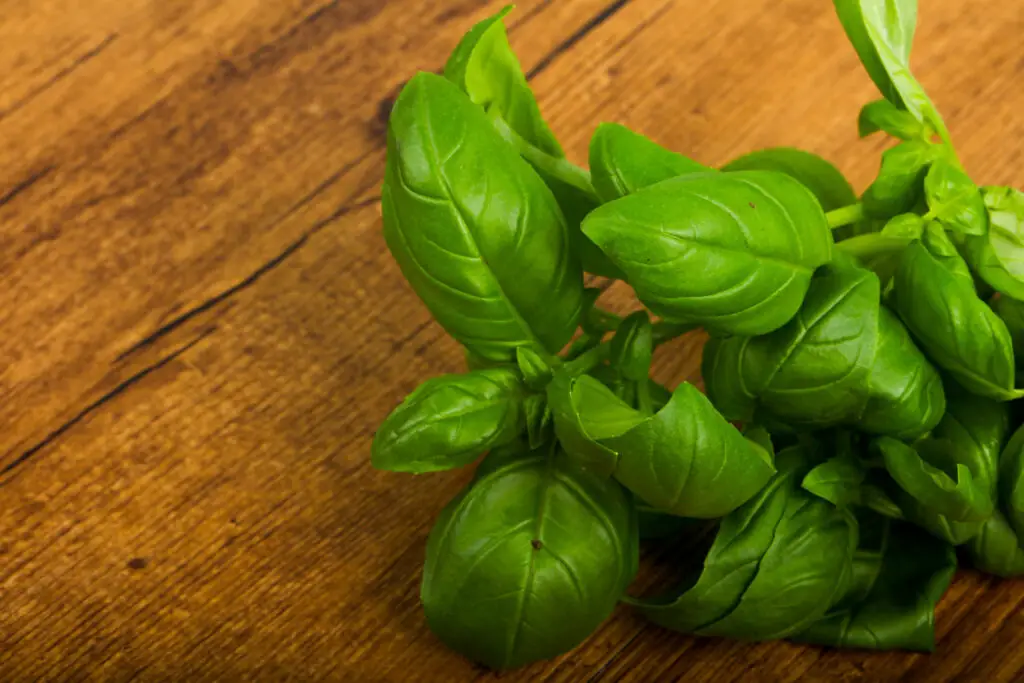
Sweet Basil leaves have long been used in various cuisines to add a distinctive flavor to dishes. However, many people are unaware that they can also serve as an excellent perilla leaves substitute.
This is because both herbs belong to the same family and share common aromatic compounds that give dishes their distinct fragrance.
Sweet Basil can also provide a hint of minty flavor with a slight sweetness typical of perilla.
As a substitute for shiso (perilla), sweet basil is an excellent way to get a similar taste without necessarily having to purchase a specific ingredient.
Lemon Basil
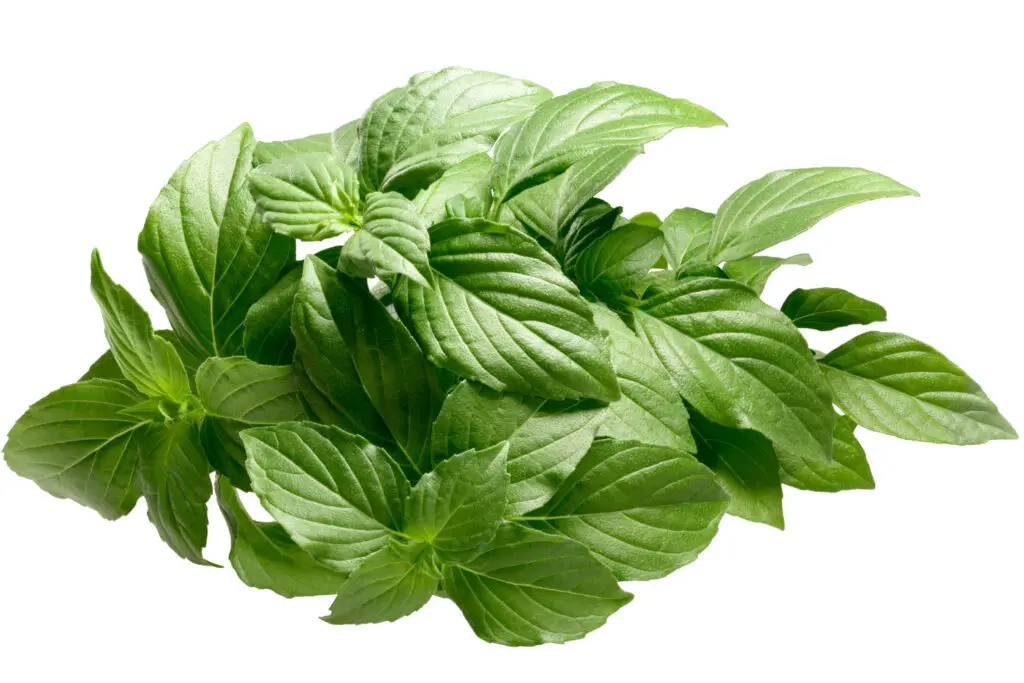
Lemon basil is excellent perilla leaves substitute due to its similar aroma and taste. Both plants share a minty and citrusy flavor profile, making lemon basil an ideal alternative when perilla leaves are not available. Additionally, lemon basil is easier to find in many grocery stores and farmer’s markets compared to perilla leaves, which are more commonly found in Asian specialty stores.
Packed with essential vitamins and minerals, lemon basil is also a healthy choice for cooking and adds a refreshing touch to soups, salads, and sauces.
Mint Leaves
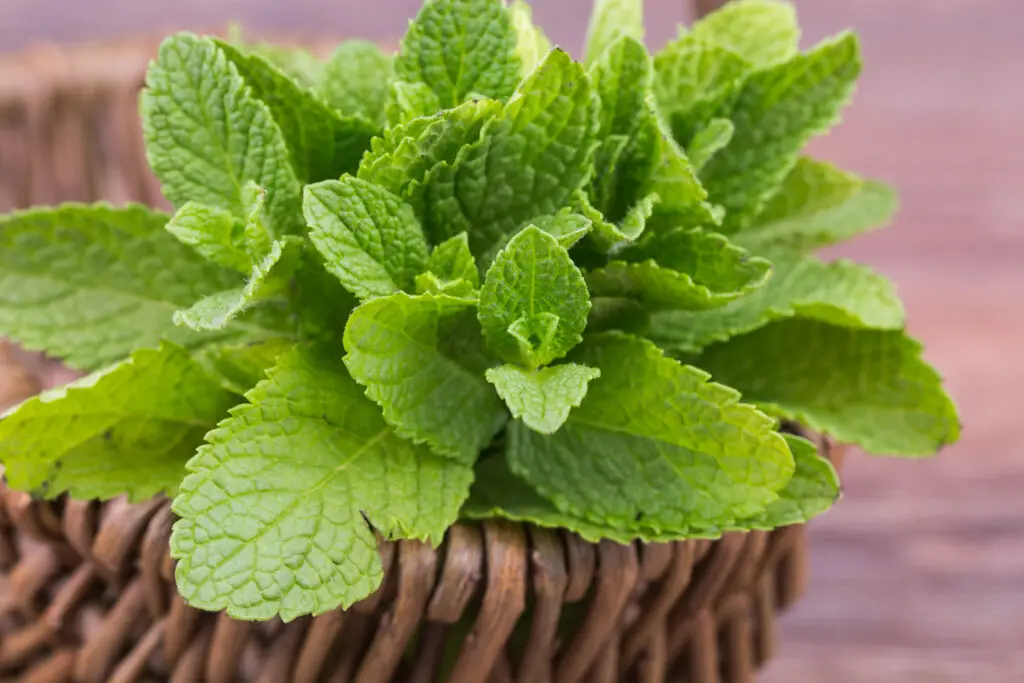
Mint leaves are becoming a popular substitute for perilla leaves in various recipes. While perilla leaves are an essential ingredient in traditional Korean dishes, they might be challenging to find in local grocery stores. Mint leaves provide a similar flavor profile with a hint of sweetness, making it a suitable replacement in many recipes.
Since mint leaves are widely available all year round, they can be used as a convenient alternative for perilla leaves.
Besides, mint leaves come with known benefits, such as aiding digestion and freshening breath.
Grape Leaves
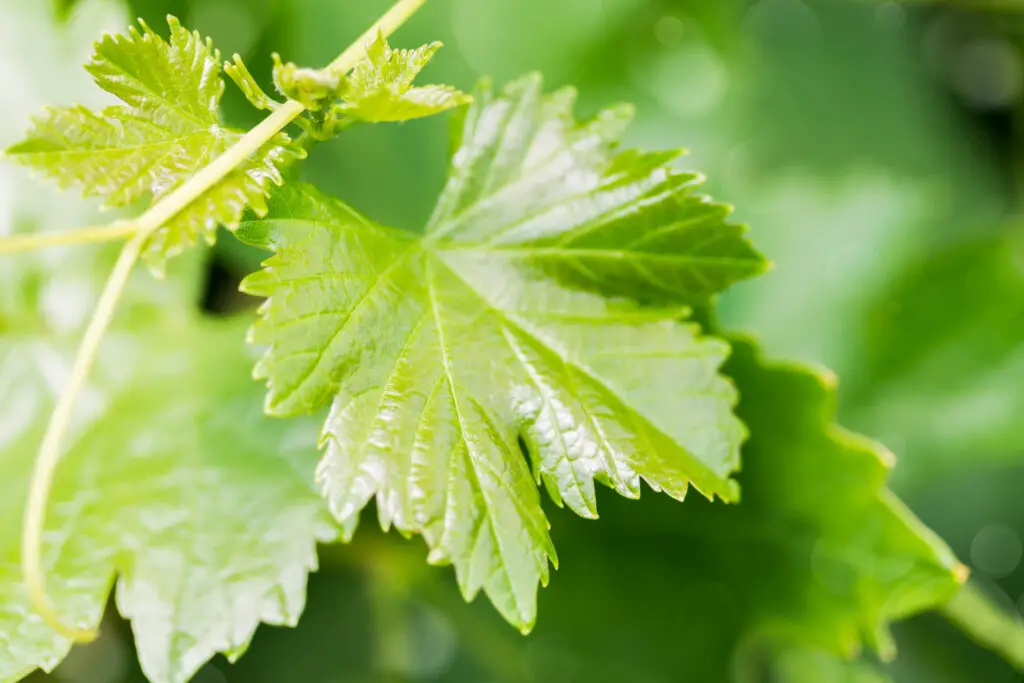
Grape leaves have become a popular substitute for perilla leaves in many dishes. Unlike perilla leaves, which can be difficult to find at traditional grocery stores, grape leaves are more readily available and can be found in most Mediterranean or Middle Eastern stores.
Although there may be a slight difference in taste between the two, both leaves have a similar flavor profile and can lend a distinct herbal note to dishes.
Grape leaves are also versatile and can be used in a variety of culinary applications, such as wrapping meats and vegetables.
Grape leaves are also rich in antioxidants and fiber, making them a healthy addition to any dish.
Green Onion
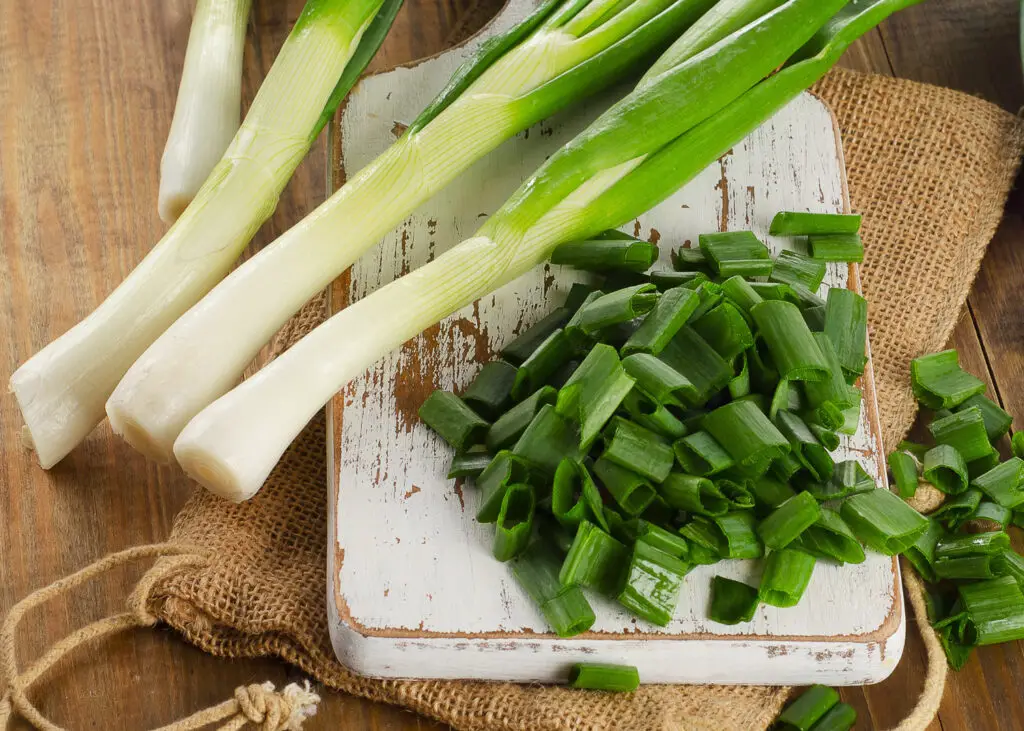
Green onion can be a great option if you’re looking for a substitute for perilla leaves. Not only does it have a similar flavor profile, but it’s also more widely available and easier to find in most grocery stores. Additionally, green onion offers a variety of health benefits, including antioxidant and anti-inflammatory properties.
Some studies have even linked green onion consumption to improved heart health and a reduced risk of certain types of cancer.
So if you’re in a pinch and need a substitute for perilla leaves, consider reaching for some green onion instead.
Lemon Thyme
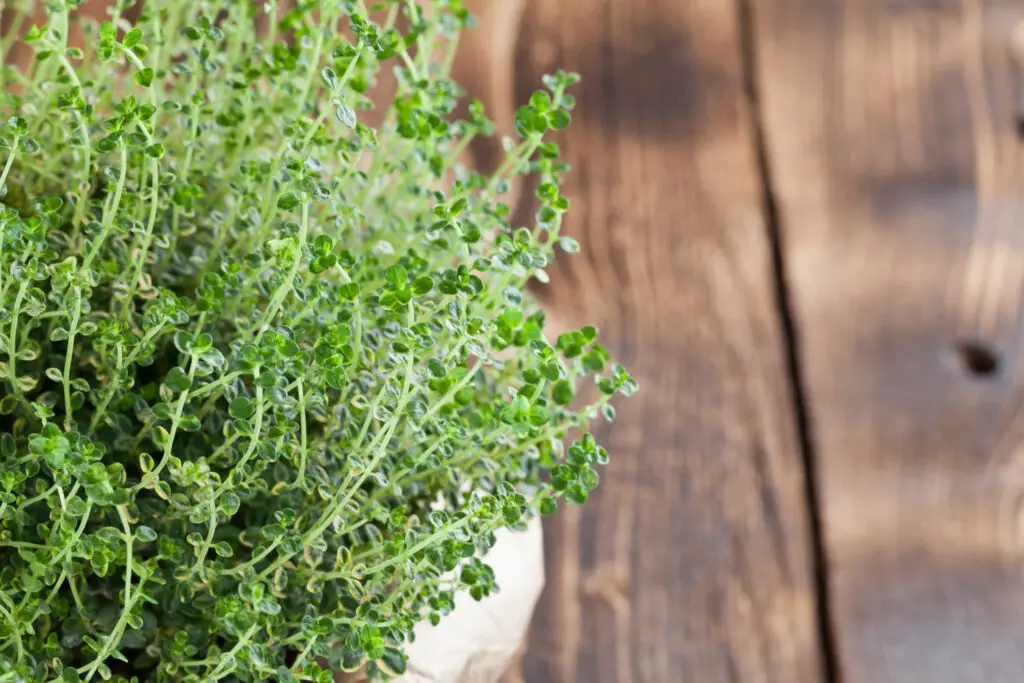
If you’re looking for a substitute for perilla or shiso leaves in your culinary creations, lemon thyme might be the perfect choice.
Not only does it offer a similar aromatic and minty flavor, but it also adds a refreshing citrus twist.
Lemon thyme is especially suitable for dishes that require the addition of a lighter, more subtle herb, such as soups, salads, and fish.
What’s more, lemon thyme is incredibly versatile and can be used both fresh and dried, depending on the recipe, making it a convenient ingredient to have in your kitchen.
Pickled Plum (Umeboshi)
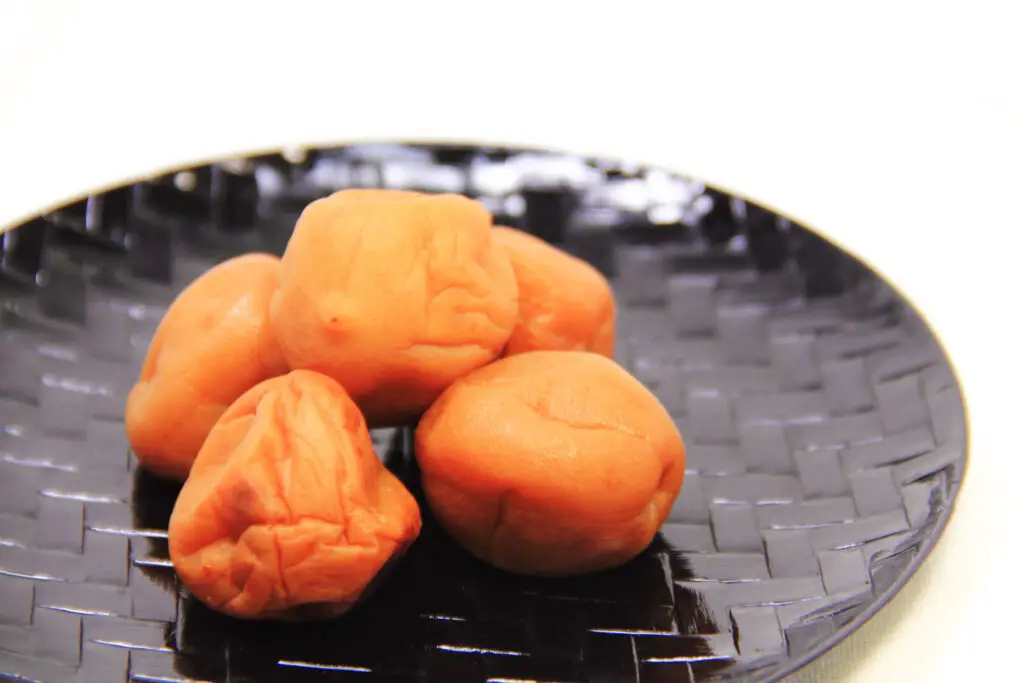
Pickled plum, also known as umeboshi, is a tangy and salty ingredient commonly used in Japanese cuisine.
While shiso leaves are often used for their unique flavor and texture, pickled plums are a great substitute for those who may not have access to shiso leaves.
Not only does pickled plum provide a similar tangy and salty flavor, but it also has several health benefits.
Umeboshi is known for its high levels of antioxidants and antibacterial properties, which can help improve digestion and boost the immune system.
Cilantro
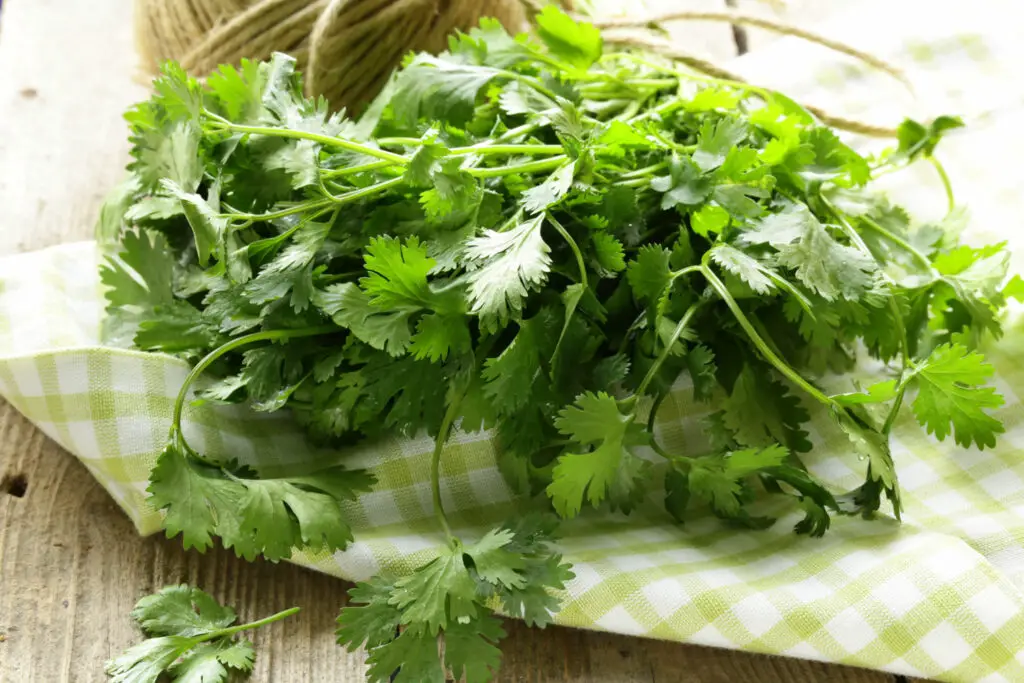
Cilantro, a common herb in many kitchens, is an excellent perilla leaves substitute used frequently in Korean cuisine.
Perilla leaves are known for their distinct flavors, ranging from earthy to slightly spicy, and are difficult to find in some regions of the world. Cilantro, on the other hand, can be found in most grocery stores and has a pleasantly fresh and citrusy taste.
Additionally, cilantro is rich in antioxidants and has several health benefits, including reducing inflammation and promoting healthy digestion. Using cilantro as a substitute for perilla leaves provides a similar flavor profile and adds an extra layer of nutritional value to your meals.
Conclusion for Best Perilla Leaves Substitute
In conclusion, there are many substitutes available for perilla leaves and shiso leaves, depending on the recipe you are making and where it is available. From lemon basil to minced pickled plum (umeboshi), each ingredient can lend its unique flavor profile to your dish while providing various health benefits.

